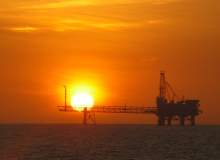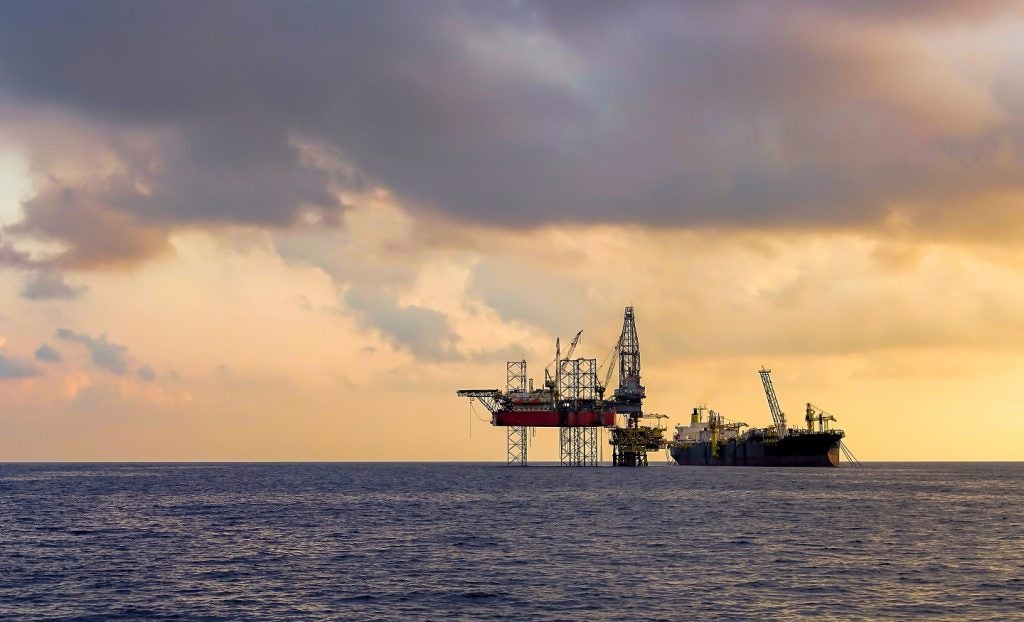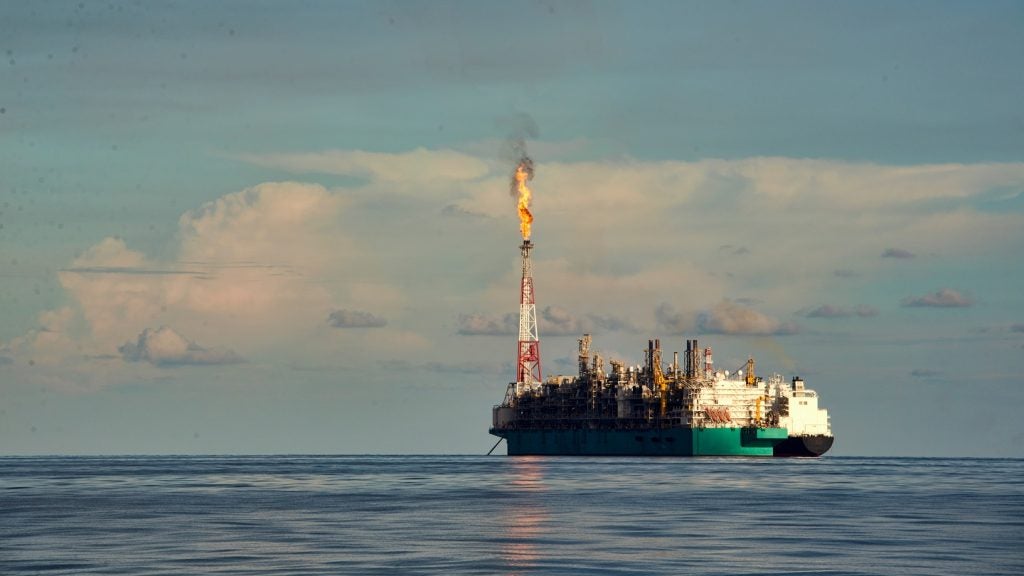
Santos Basin, Brazil
There is a lot of oil in Brazil. This is all due to a string of spectacular successes Petrobras and its partners have had in the ultra-deep offshore waters of Brazil. The most interesting finds are located in the pre-salt Santos Basin exploration Block BM-S-11, some 250km (155.3 mi) due south of Rio de Janeiro, the home of samba and traffic jams.
One of these fields is the Tupi field, named after the Tupi people. The Tupi field, the largest oil discovery in the Americas for 30 years, lies below 2000 metres (6,561.7 ft) of water and then below some 5000 metres (16,404.2 ft) of salt, sand and rocks.
The Tupi field was discovered in 2006 when the initial discovery well revealed an output of 4,900 barrels a day of sweet 30 °API crude oil, 0.7 sulphur content and 4.3 MMscf a day of gas from a deep pre-salt reservoir on a 5/8th inch choke. This discovery, together with other neighbouring fields, is likely to transform Brazil into the leading Latin American producer of oil.
Current estimates put reserves at eight billion barrels of recoverable oil, which would be sufficient to meet the total global demand for crude oil for about three months at a 2008 global extraction rate of around 85 million barrels a day.
The lead operator in the Tupi field is Petrobras, which holds a controlling stake of 65%, while Britain’s BG Group holds a 25%, and Portugal’s Galp Energia holds a 10% share. Block BM-S-11 also includes Tupi Sul, Iara and the Iracema field.
Petrobras plans to produce an initial total of 100,000 barrels a day (16,000 m3/d) and 4 million cubic meters (cm) of gas in 2011. By 2020, Petrobras expects to produce up to 500,000 barrels a day. Full field development may include up to 300 producing and injector wells with total gross oil production reaching 1,000,000 barrels a day and 28,000,000 m3)d of gas.
How well do you really know your competitors?
Access the most comprehensive Company Profiles on the market, powered by GlobalData. Save hours of research. Gain competitive edge.

Thank you!
Your download email will arrive shortly
Not ready to buy yet? Download a free sample
We are confident about the unique quality of our Company Profiles. However, we want you to make the most beneficial decision for your business, so we offer a free sample that you can download by submitting the below form
By GlobalDataDrilling of the first 15 wells has cost around $1 billion. It is estimated that the total field cost will come to between $50-$100 billion, due to the complexity of geological formations in the area. Currently Petrobras has ordered eight, which might be expanded to 12 FPSO’s to be built at the Rio Grande do Sul shipyards to meet the production needs of BM-S-11 alone.
See Also:
Beaufort Sea, Alaska
Deep in the north of Alaska, a new oil province is trying to emerge in the Beaufort Sea, which lies offshore from Alaska’s North Slope fields. The Beaufort Sea is estimated to hold around 250 km3 of oil and 300,000km3 of gas.
Much of the exploration and production work is still in the initial stages despite oil majors such as Exxon, Eni, BP and Shell having been involved for many decades in the exploration of the region around the shallow waters off the Mackenzie Delta. Progress has been hampered due to a combination of factors, including the high cost of development, an extreme climate, environmental issues and local politics. In reality however, exploitation of these fields on a commercial basis has had to await advances in technology and much higher oil prices.
One of the most commercially advanced fields in development is ENI’s $1.45bn Nikaitchuq Oil Field, which is off Oliktok Point, where an 11-acre island has been created to protect the rig from icebergs. Production began in early 2011 and is expected to reach 28,000 barrels a day and last for some forty years.
The BP Liberty Project is similar in approach to ENI’s for, like ENI, they have created an artificial island. However, to reach the Liberty oil field, BP has had to drill down for 2 miles and then drill horizontally for eight miles in order to reach the 100-million-barrel Liberty oil field at an estimated cost of more than $1 billion.
Initial production is expected at the end of 2011, and by 2013, output should reach about 40,000 barrels a day. BP’s artificial island is connected to the mainland by a causeway and to the Trans Alaskan pipeline network.
The Sea of Okhotsk
The Sea of Okhotsk borders the Russian Pacific island of Sakhalin. The seas are subject to dangerous storm winds, severe waves, icing of vessels, intense snowfalls and poor visibility. In winter, temperatures can dive to as low as -35°C and even colder if wind chill is factored in. It is a common sight to see ice sheets up to 1.5m thick move at speeds up to 2 knots.
Sakhalin is home to one of Russia’s largest integrated oil and gas field energy developments. Wood Mackenzie estimates the region holds in reserves 5 billion barrels and natural gas reserves at approximately 34 trillion cubic feet. The waters off the 946km island are divided into nine exploration blocks, with blocks one, two and three currently at various stages of development.
Sakhalin one consists of the Odoptu field (discovered in 1977), the Chayvo field (discovered in 1979) and the large Arkutun Dagi field identified in 1989. Oil and gas production in this block began in 2010.
Sakhalin two includes the development of two offshore fields, the Piltun-Astokhskoye (mostly oil) and Lunskoye (mostly gas) field, as well as construction of 800km long onshore pipelines to transport oil and gas to the south of the island, to an onshore processing facility, LNG liquefaction plants and offloading terminals for crude oil and LNG.
Wood Mackenzie estimates this block alone contains commercial and technical reserves of around 14 Tcf of natural gas and one billion barrels of liquids. Sakhalin two has reached its full capacity and it exports around 5% of the world’s current liquefied natural gas (LNG) capacity.
Currently, Japan and South Korea are the main customers for the island’s oil and LNG exports. Sakhalin two’s lead operator is Gazprom with (50%), Shell (27.5%), Mitsui (12.5%) and Mitsubishi (10%).
Sakhalin three involves the development of the East-Odoptu, Ayashsky, Veninsky and South-Kirinsky blocks. The largest block is the South-Kirinsky structure with possible reserves estimated at 700 million tons of hydrocarbons. Output is planned to start from the Sakhalin three in 2012.
The Gulf of Guinea, Angola
The Gulf of Guinea is proving to be a very interesting oil hub. It stretches from Nigeria in the north to Angola in the south. IOC’s are planning to spend billions of dollars in extracting the massive offshore deep-water oil and gas reserves throughout the region.
It should not be surprising if further spectacular finds are discovered in future, after all it shares the same geological features as Brazil’s new oil hub, the Santos Basin. Some of the most interesting prospects are to be found in the offshore waters of Angola. Already, the country is one of the largest oil producers in Southern Africa and a member of OPEC.
Angola has awarded concessions to major IOCs, including BP, Total, ConocoPhillips, Statoil, Repsol and Eni, to develop its ultra-deep-water blocks, known as pre-salt blocks.
Take Block 31 PVSM (which consists of the Platao, Saturno, Venus and Marta oil fields). Block 31 PVSM is one of Angola’s latest deep-water offshore oil field developments to be exploited in the Gulf of Guinea. The sea bed of Block 31 ranges in water depths of between 1,500 and 2,500 metres and is located some 350 miles northwest of Luanda.
Angola’s national oil company Sonangol (Sociedade Nacional de Combustíveis de Angola) is the concessionaire of Block 31 and owns 20% equity. BP Exploration (Angola) Limited, as the operator, holds 26.67%. However, the other interest owners in Block 31 are Esso Exploration and Production Angola (Block 31) Limited (25%), Statoil Angola A.S. a subsidiary of Statoil Hydro ASA (13.33%), Marathon International Petroleum Angola Block 31 Limited (ten per cent) and TEPA (BLOCK 31) Limited, a subsidiary of the Total Group (five per cent).
In phase one of this three phase project, PSVM consists of a converted hull floating, production, storage and offloading vessel (FPSO) with a storage capacity of 1,600,000 barrels, linked by a network of 170 kilometres of flow lines and 95 kilometres of control umbilical’s to 48 production, gas and water injection plus infill wells,15 manifolds and associated subsea equipment.
Once all three phases are complete, 161 trees and 40 manifolds will have been installed. Construction work began in 2008 and first oil is planned in 2012, building to a plateau of about 150,000 barrels a day in the following year. In an effort to keep to this schedule, BP has injected the project with extra resources.
Levant oil and gas fields, Mediterranean Sea
In the eastern Mediterranean Sea, between Cyprus in the north, Israel and Lebanon to the east and Egypt’s Sinai to the south, is estimated to be at least 122 trillion cubic feet (tcf) (mean estimate) of undiscovered, technically recoverable natural gas.
Active exploration is taking place in both the Cypriot and Israeli Blocks in the Levant basin. The biggest player in both blocks is currently American company Noble Energy International Ltd. Gas production began in the Israeli Mari-B field in 2004, with the first offshore natural gas production facility in Israel now producing at the rate of 140mmcf/d.
Because of the Israeli gas discoveries, the country’s power sector depends on natural gas for some 40% of its fuel. Subsequently, other gas fields have been discovered, including Tamar, Dalit and Leviathan, which could turn Israel into a net exporter of both gas and electricity by the end of the decade.
Noble Energy has announced it will commence first drilling for natural gas off the coast of Cyprus in early 2012, according to the Cyprus Commerce, Industry and Tourism Minister, Antonis Paschalides. One major stumbling block is the lack of agreement between Israel and Lebanon over their economic and maritime borders.
However, for Europe, full-scale development of the Levant fields could prove welcome, as it would provide an alternative to Russian and Central Asian gas deliveries. Such gas could be exported to Europe either by LNG tanker or by pipeline via Cyprus and Greece.





